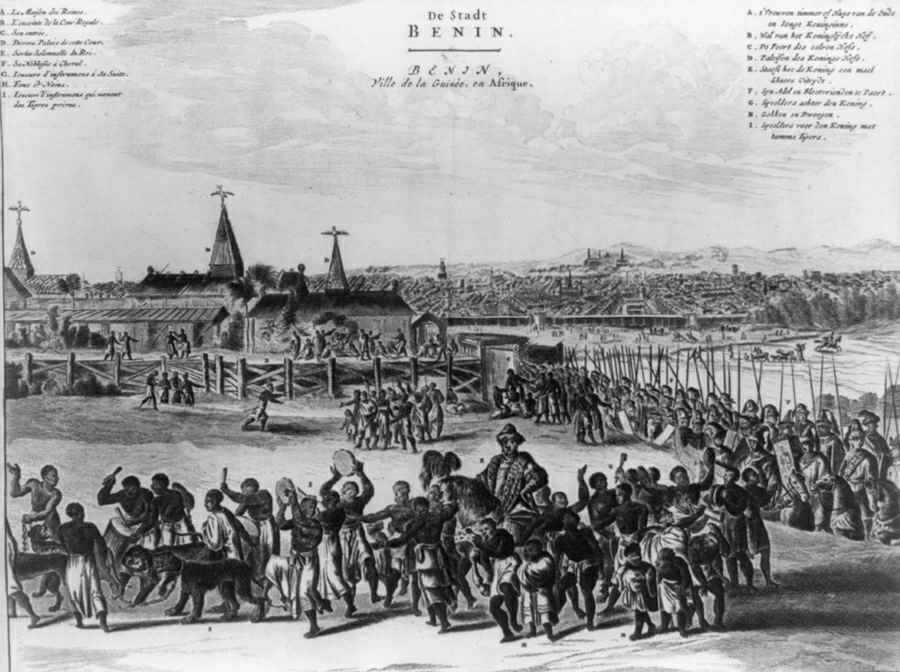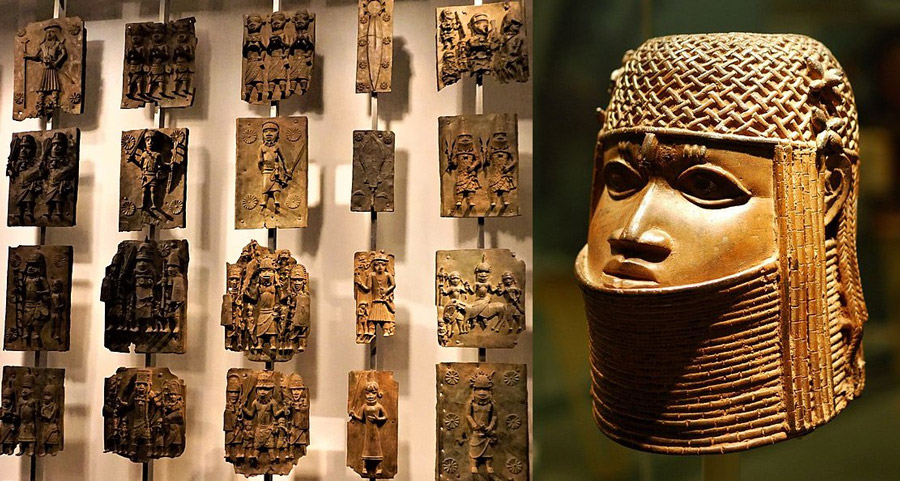The Walls of Benin are one of the largest man-made structures to have ever existed. Found in Edo, Nigeria, are constructed out of sets of inner and outer interlocking rings. They were originally built to enclose the royal precinct of the king or “Oba” from the surrounding area.
The walls are vast, not just in dimensions but in the area they encompass. Originally more than 60 feet (18 m) tall, they surrounded a huge area, more than 460 square miles (1,191 square kilometers). They are a testament to the development of urbanization and the upswing of state societies in Sub-Saharan Africa, a period of growth that lasted from the 7th century to the 14th century.
The walls survive despite damage from British forces in 1897, although portions of the walls are gradually vanishing as the modern world encroaches on them. However, significant structures remain with architecture and red-earth shrines being the highlights.
The moats and walls are protected by the government and have been so since 1961. Much of the rest of the rest of the site however requires emergency conservation work, or the walls risk being lost forever.
How did the walls get there and who built them?
First Encounters
The Benin City Walls were first discovered by Western scholars and soldiers around the year 1500. It was then that the Portuguese explorer, Duarte Pacheco Pereira, described them after returning from his travels. Almost 100 years later, another description was given by the Dutch explorer Dierick Ruiters.
Pereira first described the walls as being non-existent but that the city was surrounded by an extensive moat. Ruiters on the other hand described large earthen bulwarks with a very broad ditch to be used for defense.

As well as this, it had a gate that was made of wood and allowed entrance to the city. Archaeologists believe that Pereira was mistaken in his description and that he mistook the earthen walls as just another part of the ditch.
A Monumental Construction Project
It is hard to put an exact date on the wall’s first construction. It has been estimated that the initial construction began anywhere between the first millennium AD up to 1500AD.
- Africa’s Strange Ruin: What Exactly Is Great Zimbabwe?
- Hattusa: The Great Hittite City At The Edge Of The World
Due to the extent of the walls, archaeologists have estimated that in a 10-hour working day and with a force of up to 2,500 men, the walls could have taken some 200 days to complete. Even without factoring in time to gather materials and to transport them to the site, such a monumental undertaking speaks of a sophisticated and populous culture.
The walls were built of a ditch and dike structure. This means that the ditch was dug to form an inner moat with the excavated earth used to form up an exterior rampart, placed behind the moat. Attackers who managed to take the walls would therefore still have a moat to face, leaving them exposed and unable to advance further.
Scattered pieces of the structure remain in Edo, with the vast majority of them being used by locals for building purposes. A lot of what remained of the wall has also been torn down for real estate developments.
Ron Eglash, an ethnomathematics expert, claimed that the layout of the city was planned using fractals. This was building newer buildings from the older ones often at a smaller scale.
This was very different than what was happening in Europe at the same time. He has argued that this is one reason why Western Europeans thought that African villages and peoples were more basic than themselves.
A History of Violence
One of the first written accounts that indicate the history of this structure suggests that the moat for the walls was begun by Oba Oguola between the years 1280-1295. Along with this, he decreed for smaller moats to be constructed around smaller important towns and villages.
In the 15th century, Oba Ewuare the Great (1440-1473) decreed the extension of the moat. This produced nine entrances into the great city which greatly controlled entry.
In terms of defense, the moats were likely heavily guarded around the clock. They prevented invaders from breaking into the city as all approaches could be seen and guarded.
The ramparts themselves were steep banks of the earth that were difficult to scale but easily turned into an avalanche if needed by the defenders. The tall walls allowed for the long spears and ranged weapons of the city to pick off at the would-be attackers.
So, the size and design of the Walls of Benin combined to create a very high and thick shield around the city. The Edo inside were protected from outside aggressors and could flourish.
The People Behind the Walls
The Edo people who built this city were skilled workers and the structure itself would have housed the very richest of the country. Benin City has long been famous for its “bronzes” dating from the 13th century which, although actually made of brass are highly sophisticated and beautiful pieces of art.

As well as this, the city has produced notable pieces of ivory and wood carvings. From the 15th century until the 18th century, the city of Benin maintained good trade links with the Portuguese and Dutch traders.
Benin also had a darker role in the slave trade. In the 16th century, the empire of Benin stretched from the Niger River to modern-day Lagos. Its coastal region became known as the ‘The slave coast’ and remained in high use until the 1840s. They often exported slaves who were war captives and drawn from rival tribes.
The 18th and 19th centuries saw a decline for Benin. The kingdom was wracked by political strife and infighting among the elite members of the royal line all of which encouraged civil war. In addition to this, the slave trade began to decline, reducing the prosperity of the area. The kingdom began to lose territory and its subject peoples took the opportunity to break away from the empire.
By the time the British arrived in 1897, the kingdom was in full decline. The British themselves sacked the capital and began to incorporate the territory in the British colony of Nigeria.

The British had wanted to set up trade links but the Benin kingdom was untrusting of the invaders and refused them entry, trusting to their walls to protect them. In retaliation, the British attacked and razed the city to the ground, looting many of the artifacts and treasures that were there.
The Walls Endure
The Walls of Benin were once a rival for the Great Wall of China. However, through the decline in fortunes for the Kingdom of Benin, much of this marvelous engineering was destroyed by invaders. Fortunately, there are still some remnants that can be seen today.
Top Image: A surviving section of the Walls of Benin. Source: Adam Jones / CC BY-SA 3.0.
By Kurt Readman